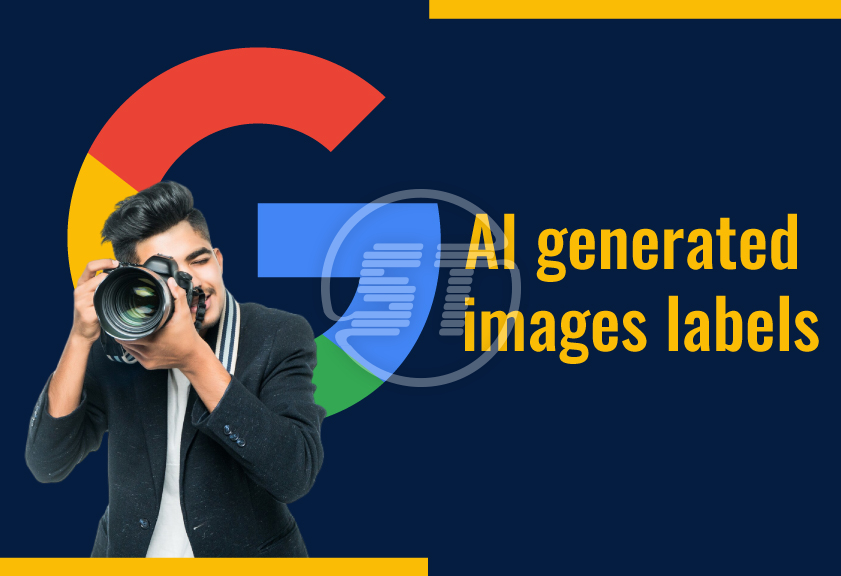Artificial intelligence (AI) is revolutionizing content creation. However, the potential for its misuse has grown exponentially. Many AI-generated videos and images are floating across the web. Recognizing such content is crucial and thus, Google has taken a significant step forward by introducing support for labeling AI-generated and manipulative images in its search results.
This move aims to enhance transparency and trustworthiness, helping users discern the authenticity of the visual content they encounter online.
Google’s proactive approach
Google’s new labeling system is a proactive measure designed to combat the challenges posed by AI-generated and manipulated images. The labels will indicate whether an image has been AI-generated or significantly altered, providing users with crucial context. This initiative is part of Google’s broader commitment to improving the quality and reliability of accessible information through its platforms.
The labeling process involves several key components:
AI detection algorithms
Google employs advanced AI algorithms to detect images that have been generated or manipulated using AI. These algorithms analyze various attributes of an image to determine its authenticity.
Metadata analysis
In addition to visual analysis, Google’s system examines metadata associated with images. Metadata can provide insights into the origin and modification history of an image, aiding in the identification process.
User reports and feedback
Google also relies on user reports and feedback to identify AI-generated or manipulated images. Users can flag suspicious photos, which are then reviewed by Google’s team for appropriate labeling.
You may like: Google Spam Update June 2024
The International Press Telecommunications Council (IPTC) photo metadata
Likewise, in other standards for web creation, there are specifications for photo metadata that are made by IPTC. Photo metadata is all about photo labeling with correct information about the photo’s copyright, licensing, and image descriptions. The metadata is used by Google Images to show relevant information about the image.
Basically, using this photo metadata is mandatory with each uploaded photo. According to Google:
“When you specify image metadata, Google Images can show more details about the image, such as who the creator is, how people can use an image and credit information. For example, providing licensing information can make the image eligible for the Licensable badge, which provides a link to the license and more detail on how someone can use the image.”
To identify AI-generated images, Google invented a new tool called SynthID. The tool embeds imperceptible watermarks in photos and marks them as synthetic. The main aim of SynthID is to detect the use of AI images and enhance content quality.
The working process of SynthID
This tool uses two AI models together – the first one is to add the imperceptible watermarks and another one is to identify them. SynthID’s digital watermark is directly imparted in the pixel data.
Google is effectively using these models to embed watermarks to original image content, protecting visual quality along with enabling detection. Though SynthID tool is evolving, with time, it is expected to offer capabilities beyond image identification to audio, video, and text detection as well. However, it is accurately identifying AI-generated images currently by providing a technical approach.
AI image manipulation metadata
Google began to focus on images that are manipulated using AI algorithms such as convolutional neural networks (CNNs) and generative adversarial networks (GANs). So, Google’s new metadata covers two types of AI image manipulation: Inpainting and Outpainting.
Inpainting is a method of enhancing images to reconstruct them and can be filled with any image where needed.
On the other hand, outpainting is an algorithm process of adding images. Outpainting morphs original images and creates an altogether different image.
To avoid these two manipulative processes, Google now supports labeling images with a new metadata property:
compositeWithTrainedAlgorithmicMedia
It is a structured metadata embedded in a digital image.
According to Google documentation:
“Digital Source Type compositeWithTrainedAlgorithmicMedia: The image is a composite of trained algorithmic media with some other media, such as with inpainting or outpainting operations.”
Impact on users and content creators
For users, this development enhances their ability to critically evaluate the images they encounter online. By clearly indicating AI-generated or manipulated content, Google empowers users to make informed decisions and reduces the risk of being misled by false visuals.
Content creators, on the other hand, are encouraged to disclose when they use AI tools to generate or modify images. Transparency in content creation not only fosters trust but also aligns with ethical standards in digital media.
While Google’s labeling system represents a significant advancement, it is not without challenges. Detecting sophisticated AI-generated images can be complex, and there is a continuous arms race between AI generation and detection technologies. Google will need to continually update its algorithms to stay ahead of increasingly advanced AI techniques.
In a nutshell,
Google’s support for labeling AI-generated and manipulative images marks a pivotal moment in the digital age. By enhancing transparency and helping users navigate the complexities of visual content, Google is taking a significant step towards a more reliable web world.
As AI technology continues to evolve, initiatives like this will be essential in safeguarding the integrity of online information.
As the search landscape is constantly evolving, Skynet Technologies is offering search engine optimization services to give you the competitive thrust and out-hustle your business rivals in getting more qualified traffic, leads, and conversions. Reach out [email protected] to know more.


